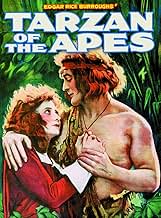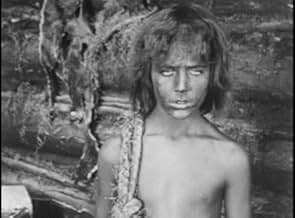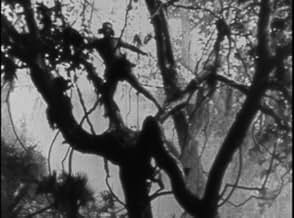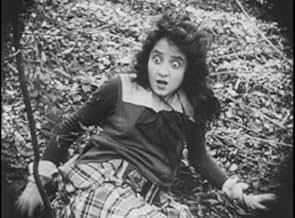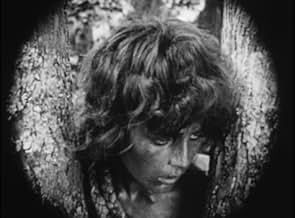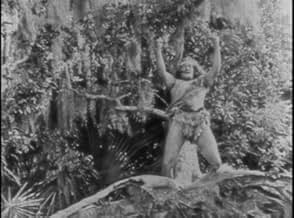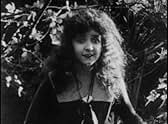Agrega una trama en tu idiomaReared by a childless ape, the orphaned heir of the Greystokes becomes one of the apes. Then Dr Porter organises a rescue expedition, and his beautiful daughter Jane catches his attention. H... Leer todoReared by a childless ape, the orphaned heir of the Greystokes becomes one of the apes. Then Dr Porter organises a rescue expedition, and his beautiful daughter Jane catches his attention. Has Tarzan of the Apes found the perfect mate?Reared by a childless ape, the orphaned heir of the Greystokes becomes one of the apes. Then Dr Porter organises a rescue expedition, and his beautiful daughter Jane catches his attention. Has Tarzan of the Apes found the perfect mate?
- Dirección
- Guionistas
- Elenco
Madame Sul-Te-Wan
- Esmeralda - Jane's Maid
- (sin créditos)
Stellan Windrow
- Tree-Swinging Tarzan
- (sin créditos)
- Dirección
- Guionistas
- Todo el elenco y el equipo
- Producción, taquilla y más en IMDbPro
Opiniones destacadas
After a shipboard mutiny forces Lord and Lady Greystoke into the uncharted African Jungle, Lady Greystoke gives birth to a boy. The parents die soon after, and the boy (Gordon Griffith) is raised by a family of "apes". He learns to live and fight like them, but also learns how to read and right from escaped slave Binns (George B. French), who heads back to Europe. Binns eventually convinces enough people that young Greystoke is still alive, and brings an expedition back to find him years later. The boy has now grown into the man known as Tarzan (Elmo Lincoln), Lord of the Jungle. When he sets eyes on Jane Porter (Enid Markey), it's love at first sight, and he rescues her from a number of perils. Also featuring Thomas Jefferson (!).
Filmed in Louisiana, this proved a hit, despite only adapting the first half of Burroughs' novel. A quick sequel, The Romance of Tarzan, was released later the same year but has since been lost. Lincoln, who had played a scary guard in Griffith's Intolerance, makes for an equally scary looking Tarzan, big and beefy, wearing a headband and an over-the-shoulder fur onesie. His Tarzan "yell" consists of him raising his fists in the air and making an insane face. The "apes" in Tarzan's family are people in weird monkey suits, with a real chimp thrown in occasionally to make things even weirder. There's also a really bad gorilla suit, as well as a real lion which one source I have says was actually killed by Lincoln on screen. There's enough strange stuff here to keep the viewer's interest, along with a brief (under an hour) running time.
Filmed in Louisiana, this proved a hit, despite only adapting the first half of Burroughs' novel. A quick sequel, The Romance of Tarzan, was released later the same year but has since been lost. Lincoln, who had played a scary guard in Griffith's Intolerance, makes for an equally scary looking Tarzan, big and beefy, wearing a headband and an over-the-shoulder fur onesie. His Tarzan "yell" consists of him raising his fists in the air and making an insane face. The "apes" in Tarzan's family are people in weird monkey suits, with a real chimp thrown in occasionally to make things even weirder. There's also a really bad gorilla suit, as well as a real lion which one source I have says was actually killed by Lincoln on screen. There's enough strange stuff here to keep the viewer's interest, along with a brief (under an hour) running time.
At this early point in American film history, Tarzan of the Apes was an instant success. Elmo Lincoln was perhaps the best actor at the time for the role. It's a fairly straight forward telling of the novel, tho Edgar Rice Burroughs was frequently on the set in an advisory role and his input was seldom utilized. In the books, Tarzan was quite the self-made scholar and this was barely touched upon in the film. For 1918, this turned out to be an excellent film, parts of which still hold up today. It's a solid 7 out of 10, and well worth seeing.
This is the first and oldest Tarzan movie ever made, as far as I know. Interesting mainly for that point. For the rest, I will always prefer Johnny Weissmuller as the Tarzan character, and I suppose I am not the only one to think like this. Elmo Lincoln could have been replaced by a more convincing actor, more athletic. OK, it tries to speak of the true, genuine story of Tarzan, according to the Edgard Rice Burrough's novel, as Hugh Hudson did in 1984. This is a good point that can justify to watch this rare item, xanks to TCM. This is also a shame that so many features fromt he silent era are now lost forever.
This original silent version of the Lord of the Apes is perhaps the truest screen representation of the way Tarzan is envisioned in the books by Edgar Rice Burroughs. It is seems very crude but really isn't. It follows the first story (in as much as it can in the limited time of the feature) very closely. Elmo Lincoln, while no Adonis, is very adequate in the role. He's not Johnny Weissmuller...but then Johnny didn't really look all too much like Tarzan should have either.
If someone watches this film and starts looking for shortcomings, they'll probably find a reasonable amount. However, considering the film was made in 1918, it's an amazingly good film--even with its few mistakes and cheesy touches--which, relative to other films of the day, were few.
This original Tarzan film was made in Louisiana. I live in Florida and I could tell by looking at the plants that it was filmed in this part of the USA, but considering that many later Tarzan films were filmed with houseplants all over the set, the backwoods of Louisiana (with all its Spanish moss) was a good choice for a domestic production. As far as the wild animals go, it was a mixed bag. Unfortunately, the elephant was an Asian elephant but I can't blame the film makers too much--the African variety are a lot nastier and dangerous. What I can blame them for, a bit, are the apes that adopt Tarzan. They are clearly people in cheap ape costumes--that look neither like gorillas or chimps--just people in ape costumes! But once again, given the technology of the era, it isn't that bad--plus, Stanley Kubrick did the same thing in "2001" and it's considered a masterpiece!! As for the plot, aside from the addition of a character and a few other small changes, it is essentially Edgar Rice Burroughs' book come to life. It's actually much more accurate than many of the later versions and because it stays closer to the book, it is more interesting and watchable...and less silly. In fact, as far as the writing, direction and acting go, it was all very, very good for such an early full-length film--and a lot better than the gobs of Tarzan films from the 1950s and 60s.
Overall, very good and very interesting.
This original Tarzan film was made in Louisiana. I live in Florida and I could tell by looking at the plants that it was filmed in this part of the USA, but considering that many later Tarzan films were filmed with houseplants all over the set, the backwoods of Louisiana (with all its Spanish moss) was a good choice for a domestic production. As far as the wild animals go, it was a mixed bag. Unfortunately, the elephant was an Asian elephant but I can't blame the film makers too much--the African variety are a lot nastier and dangerous. What I can blame them for, a bit, are the apes that adopt Tarzan. They are clearly people in cheap ape costumes--that look neither like gorillas or chimps--just people in ape costumes! But once again, given the technology of the era, it isn't that bad--plus, Stanley Kubrick did the same thing in "2001" and it's considered a masterpiece!! As for the plot, aside from the addition of a character and a few other small changes, it is essentially Edgar Rice Burroughs' book come to life. It's actually much more accurate than many of the later versions and because it stays closer to the book, it is more interesting and watchable...and less silly. In fact, as far as the writing, direction and acting go, it was all very, very good for such an early full-length film--and a lot better than the gobs of Tarzan films from the 1950s and 60s.
Overall, very good and very interesting.
¿Sabías que…?
- TriviaEdgar Rice Burroughs sold the film rights for "Tarzan of the Apes" to the National Film Corporation on June 6, 1916. He received a record $5,000 cash advance on royalties, $50,000 in company stock and 5% of gross receipts.
- Versiones alternativasAbridged version released by Hollywood Film Enterprises in 1937 with the title, Tarzan the Boy.
- ConexionesFeatured in Fractured Flickers: Rose Marie (1963)
Selecciones populares
Inicia sesión para calificar y agrega a la lista de videos para obtener recomendaciones personalizadas
- How long is Tarzan of the Apes?Con tecnología de Alexa
Detalles
Taquilla
- Total en EE. UU. y Canadá
- USD 3,270,000
- Tiempo de ejecución1 hora 13 minutos
- Mezcla de sonido
- Relación de aspecto
- 1.33 : 1
Contribuir a esta página
Sugiere una edición o agrega el contenido que falta

Principales brechas de datos
By what name was Tarzan of the Apes (1918) officially released in India in English?
Responda
